A budding category in the Shanghai dining scene, contemporary Chinese is all about honoring local products over imported ones, and the melding of legacy Chinese heritage dishes coupled with international influence – a culinary movement that exemplifies what this city is.
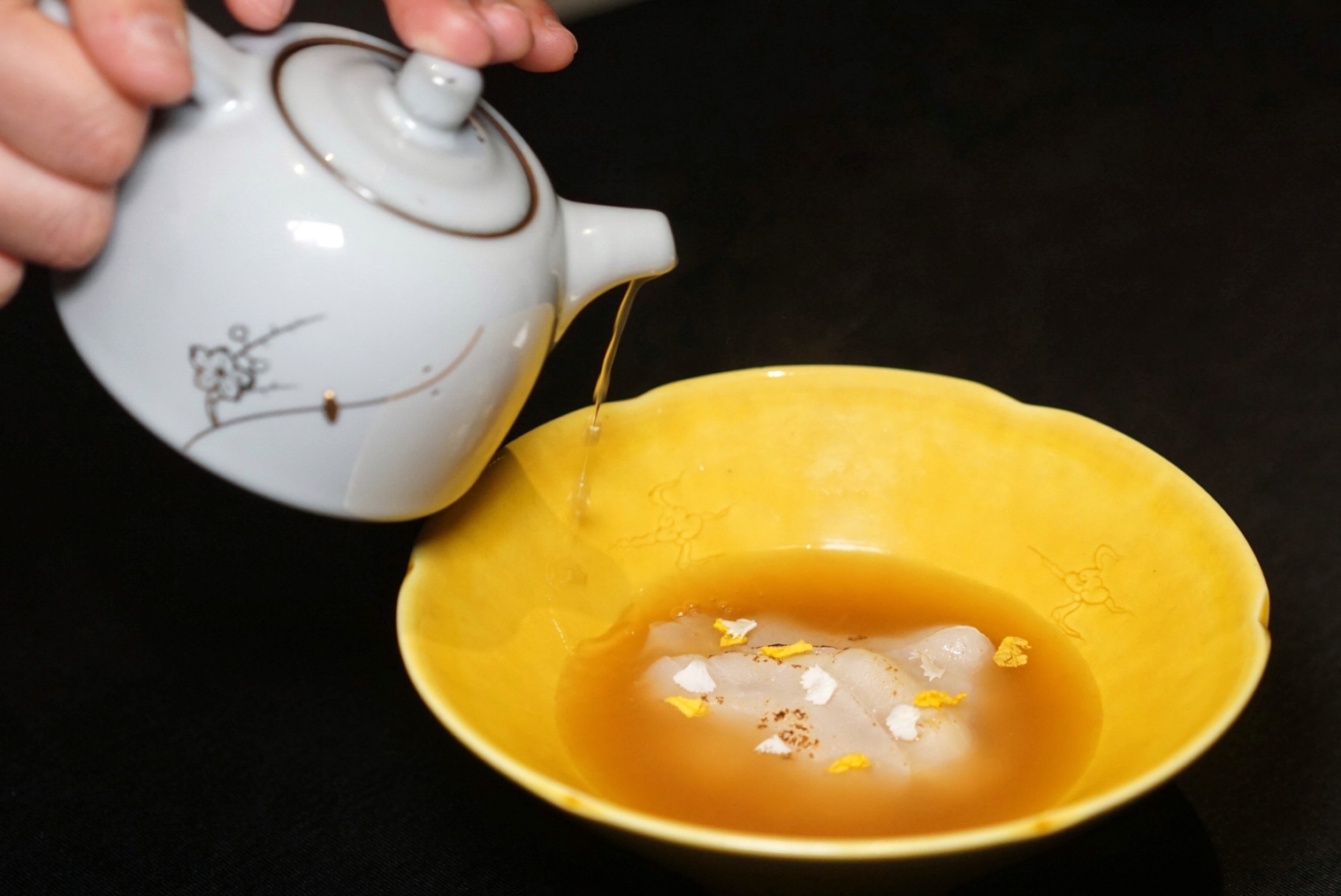
Image by Sophie Steiner/That's
The focus of these venues is not to be another 'modern Chinese' restaurant, where the aim is to make food more appealing to Western palates, insinuating that Chinese cuisine – as is – isn’t good enough.
It’s the opposite – showcasing how memorable and distinct authentic regional Chinese cooking is while probing undervalued, obscure zonal tastes that are as equally diverse and promising as those that get "exported" outside of the country.
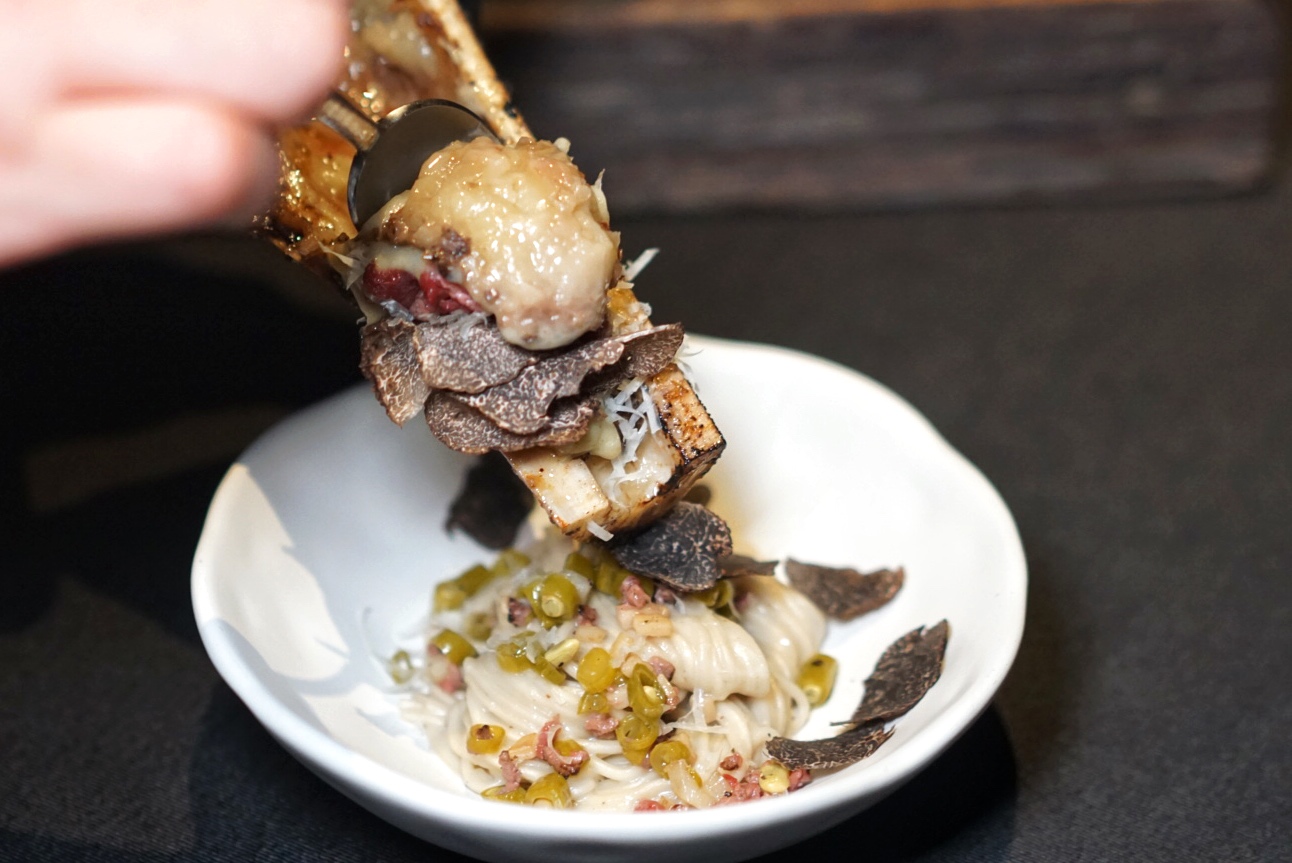
Image by Sophie Steiner/That's
We commend these restaurants for exploring what "contemporary Chinese" can mean; they serve as shining examples of what we love so much about this nascent space.
The teams aren't trying to reinvent or alter what Chinese cuisine, at its core, is; instead they are serving up a plate of nostalgia – the flavors they grew up with – in a way that is most appealing to the Shanghai masses.
Bastard
Positioning themselves as modern-day food rebels without a cause, Bastard owners and DongXi cofounders, Chef Michael Janczewski (Juke) and Jiro H, want to be the antithesis to everyday Chinese street food.
The aim is to create a trendy Chinese eatery with sharing plates, natural wines and house-infused highballs – a purely experimental concept, and the kind of place they themselves would choose to hang out.

Image by Sophie Steiner/That's
Janczewski’s unfettered cooking style pairs contrasting geographically disparate Chinese cuisine, distorting it further with a mix of traditional and Western cooking techniques that can be interpreted differently by each person filling one of the space’s 26 seats.
It’s not that disdainfully scorned ‘f-word’ that chefs flee from of late: fusion – a word whispered in disgust, brought on by its overuse. Rather, it’s all about the artistic integration of current Chinese tastes in an unconventional way that just works.
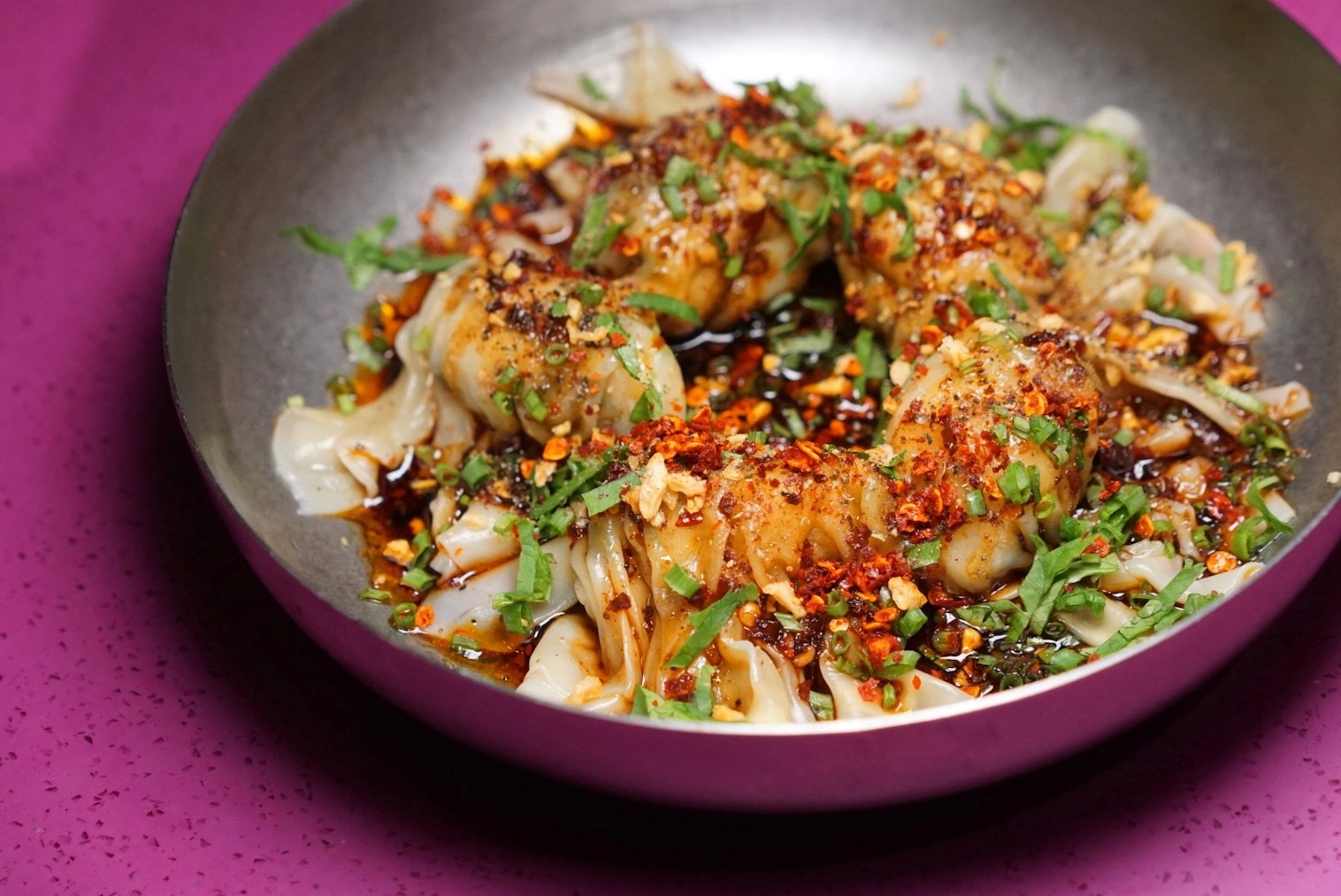
Image by Sophie Steiner/That's
Drawing on his passion for – nay, obsession with – Chinese street food, Janczewski has put together a roster of “bastardized” (hence the restaurant's name) Chinese plates – each embodying provincial Chinese components that have undergone a Ninja Turtles-esque metamorphosis.
The result is a superlative rendition of the common street snack from which each dish owes its humble beginnings.
Bastard, Room 102, #30, 319 Jiaozhou Lu, by XInzha Lu 胶州路313弄,30号102室,近新闸路.
Charcoal Player
A present-day tribute to Sichuan cooking, Charcoal Player in TX Mall grants diners a refined taste of one of China’s most famed cuisines.
Offering a 9-course set menu for RMB780, guests can expect color-coordinated plates, each highlighting distinct aspects of Sichuan cooking techniques and flavors. Think (the now shuttered) Peacock Room or The Pine, only more cutting edge.
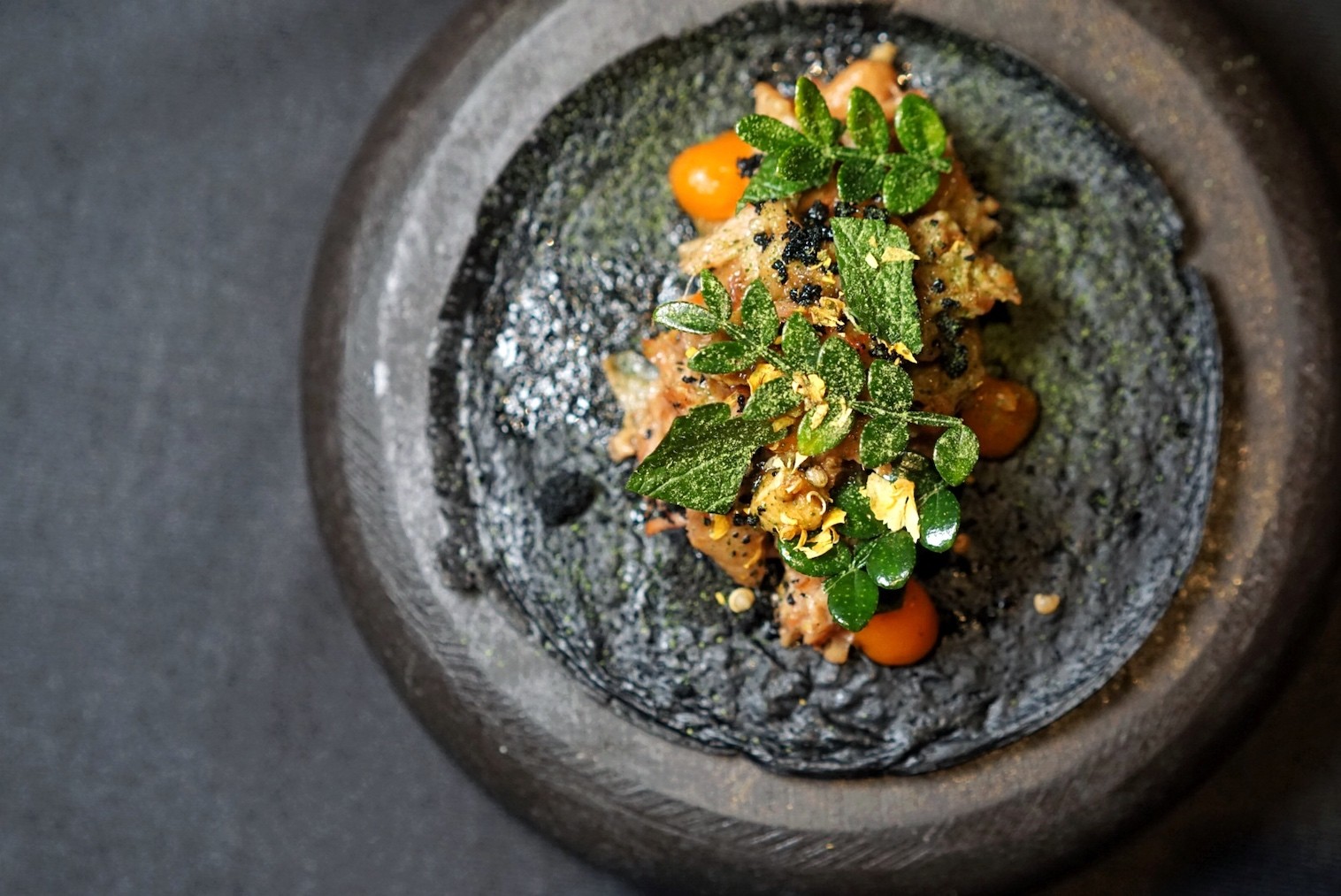
Image by Sophie Steiner/That's
Chef Junjie was born in Chengdu and grew up in Australia, combining experiences from both into his cooking style. The same restaurant group is also behind Yuzhilan, a Michelin-star and Black Pearl restaurant that focuses on conventional Sichuan cuisine.
The menu's first iteration served as a prelude of what’s to come, a smattering of cooking styles and ingredients from all over the province.
However, the newest menu focuses on various sections of Sichuan, divided by altitude rather than geographical location.
For example, there's a Mountain menu, followed in time by the River menu and eventually an Ocean menu.
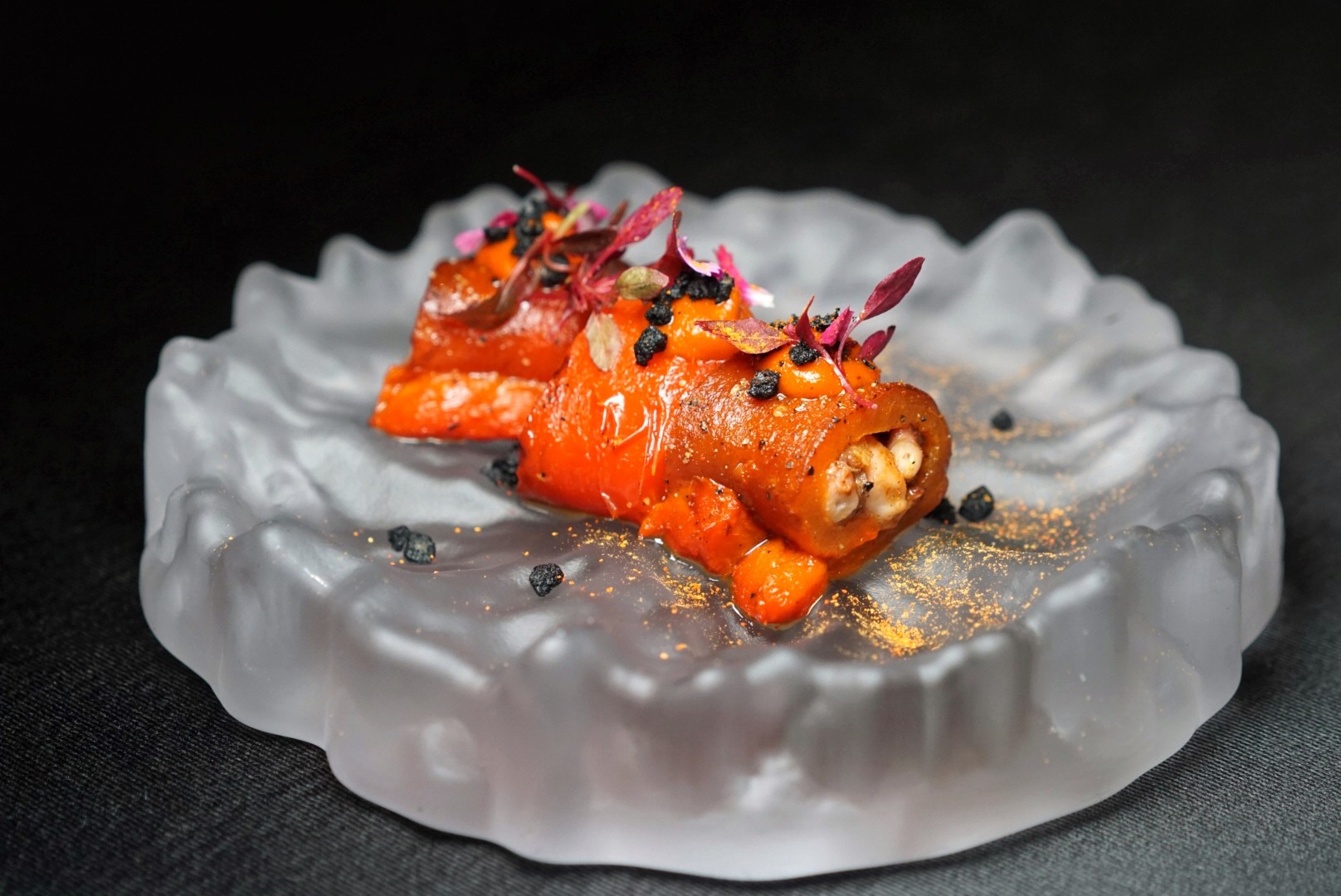
Image by Sophie Steiner/That's
Each dish is presented in a monochrome color palette, showcasing a ceremonial Chinese color – good fortune red, royal yellow, healing green, authority black, love purple, etc.
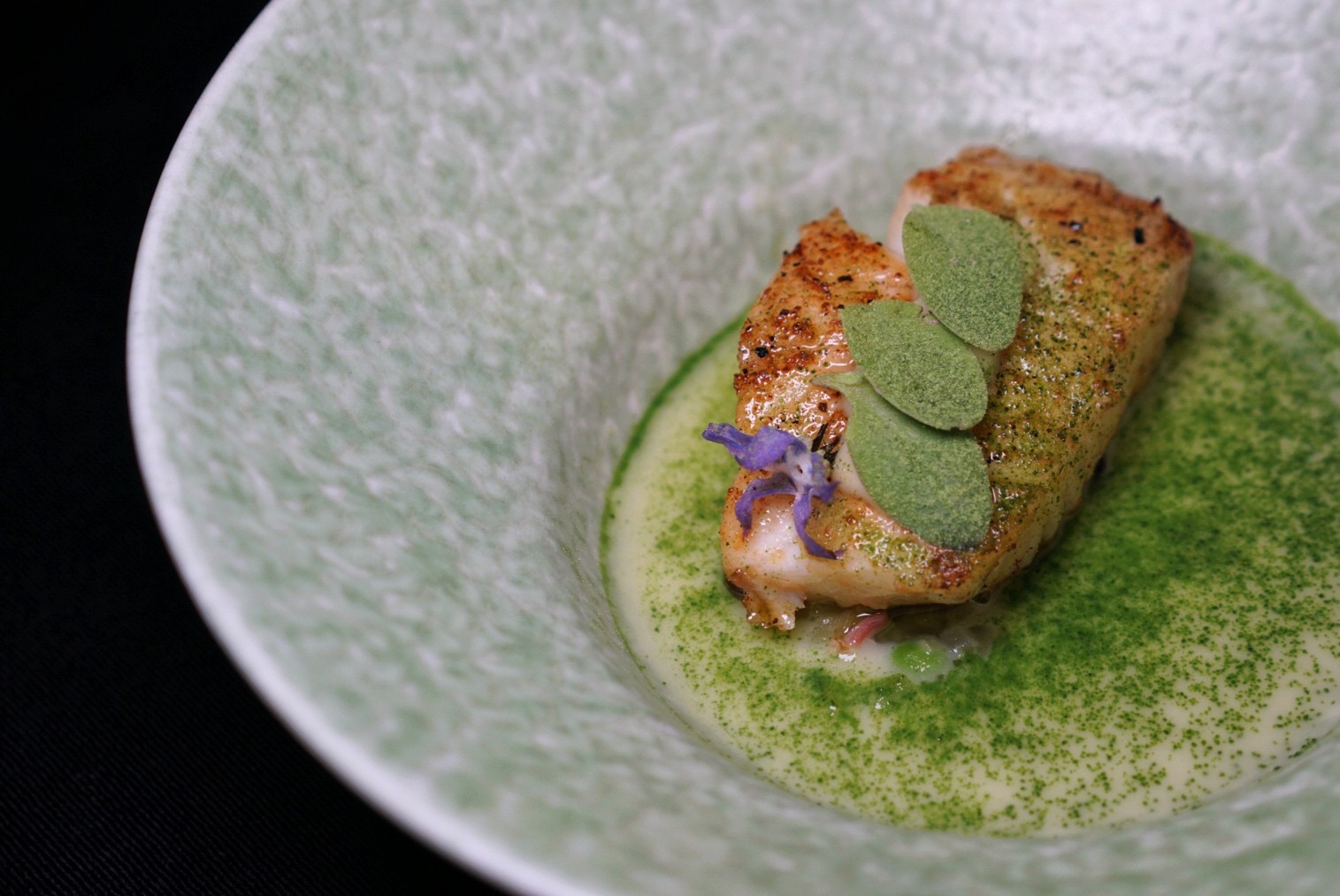
Image by Sophie Steiner/That's
Because the menu involves a strong emphasis on fire (charcoal is in the name, after all), the starter bestows a subtly sweetened white mushroom soup, a food that allows the body to jiang huo, or decrease internal heat brought on by the warming dishes to come.
A key component of the menu is balance – a balance of yin and yang, a balance of light and dark, a balance of spice and sweet, and a balance of soft and firm.
Charcoal Player, #3, L5, 523 Huaihai Zhong Lu, by Chengdu Nan Lu, 淮海中路523号L5层03是, 近成都南路.
Collectif
With a menu centered around the 24 solar periods of the traditional Chinese calendar, Collectif is an amalgamation – or collection, hence the name – of ingredients, recipes and memories gathered by co-owners and chefs Shane Wang (previously at INUA in Tokyo, Jean Georges, Seul&Seul) and Malik Sie (previously Chef de Cuisine at Bloom) throughout their China and global travels.
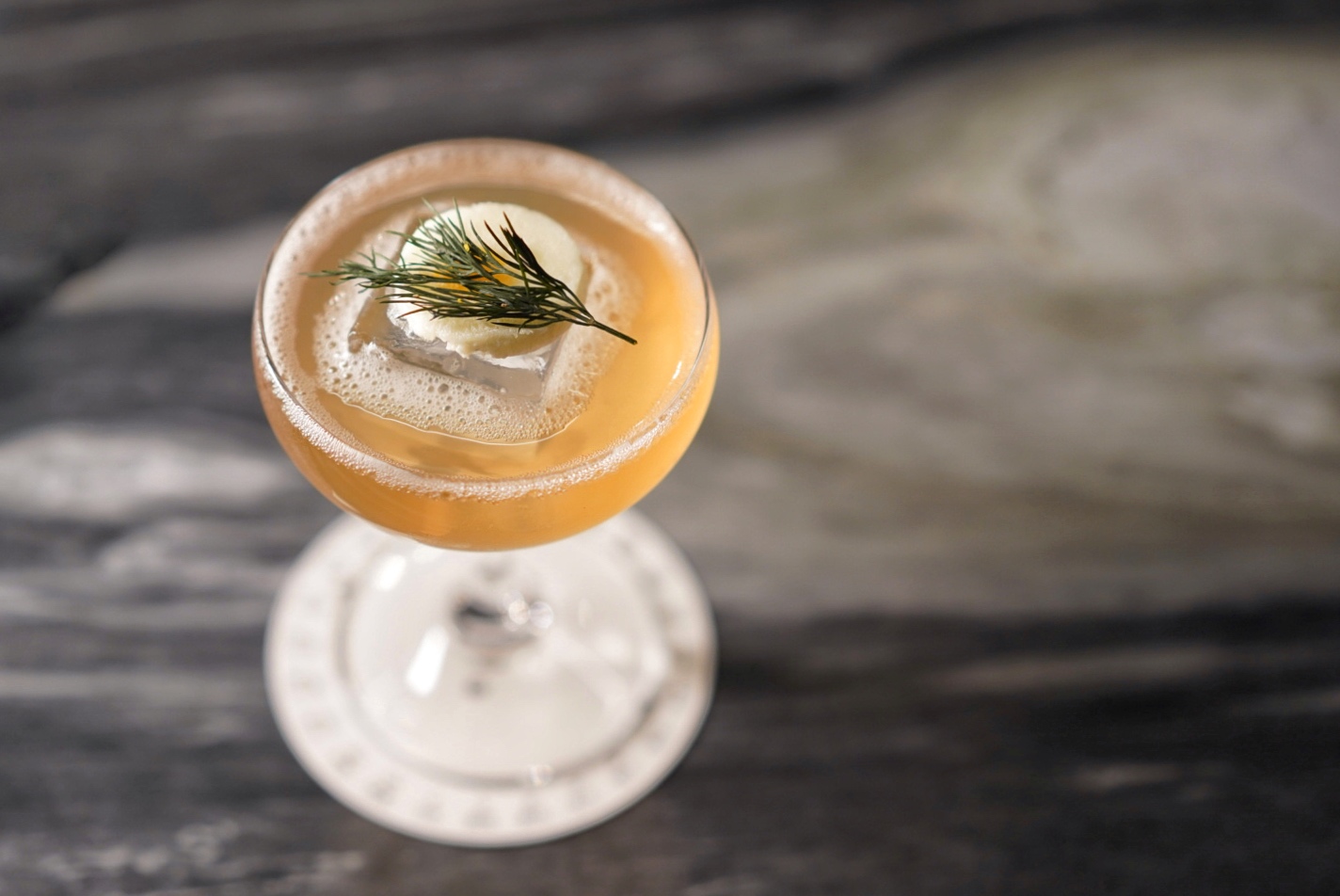
Image by Sophie Steiner/That's
After studying and working around the world, the two have returned to Shanghai, empowered to honor the ingredients of their childhood (in Zhejiang and Taiwan) while also re-working lesser known flavors into a fine dining setting.

Image by Sophie Steiner/That's
As a classically-trained French chef, Wang draws on her "toolbox" of both French and Chinese cooking techniques to complete a dish, allowing diners to simultaneously indulge in both the familiar and peculiar in ingenious forms.
Expect to find curious ingredients like pungent Zhejiang Pinghu zaodan (糟蛋) – or koji-preserved egg; grassy jiuxiang caotao (酒香草头); flame-scorched Dalian Wagyu flank steak; barnyard funky Chinese toon shoots; jujube sponge cake; and custardy tofu pudding.
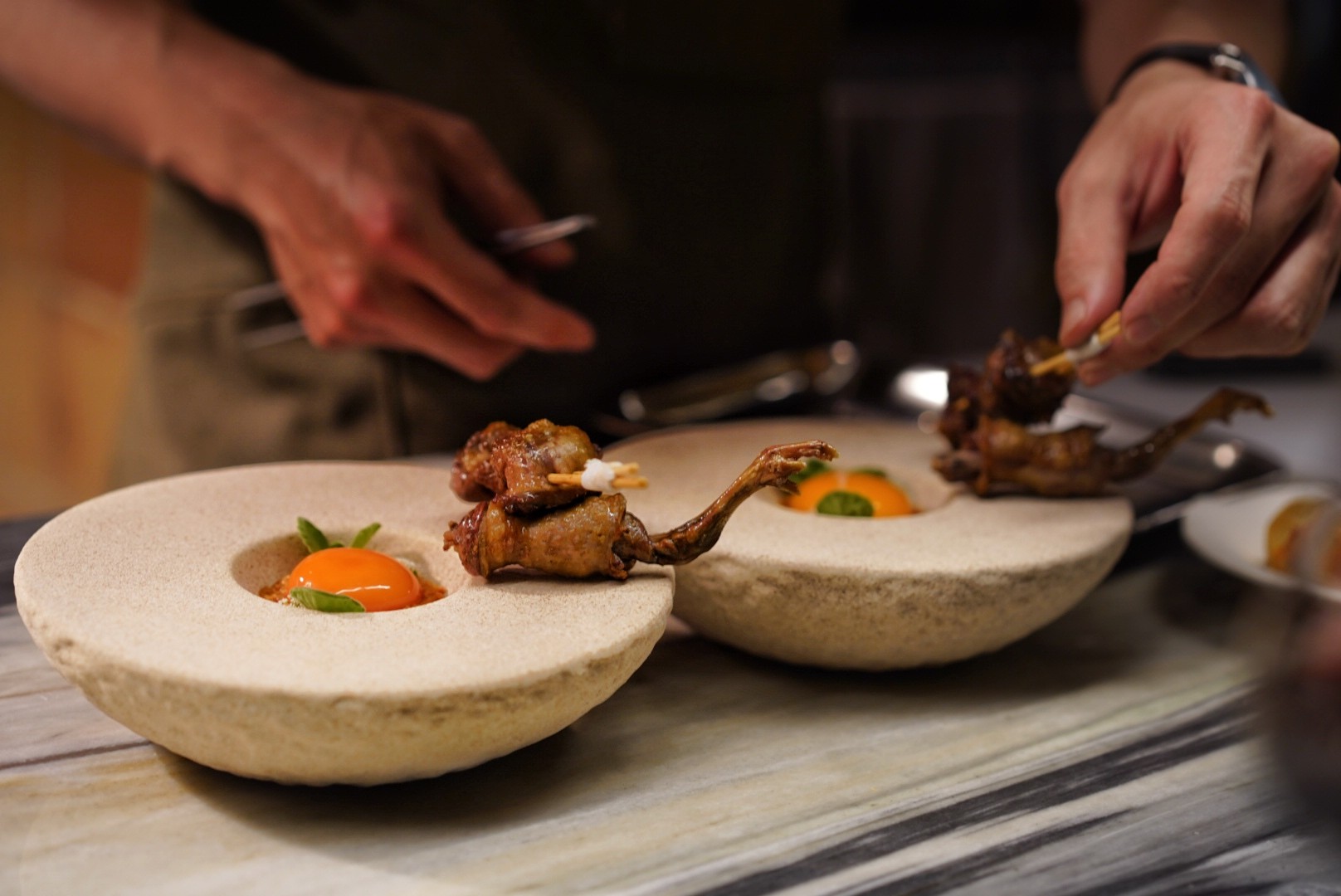
Image by Sophie Steiner/That's
The venue currently offers a prix fixe seasonal menu (that covers 16 courses) for RMB648, with an option to add on three glasses of wine for RMB268 or five drinks for RMB588 – three wines and two bespoke cocktails, showcasing their newly launched Chinese tea-inspired cocktail menu.
By the end of the month, they will also present guests with an a la carte menu, with highlights from previous set menus, plus a few new dishes.
Collectif, D-101, 850 Xikang Lu, by Xinfeng Lu, 西康路850号 D-101室, 近新丰路.
Forage
Forage owners Jill Jiang, Fan Gao and William Zhu (SOiF) want to be the anti-boring kickback at what they feel has taken over the wine industry in Shanghai.
Coming from a background of high-end kitchens (including Ultraviolet and Maison Lemolaise), the hodge-podge group of friends aim to fashion a funky wine bar that is unabashedly independent, with the main goal of doing something niche and purely experimental.

Image by Sophie Steiner/That's
Chef Mario Fu (Grand Banks) leads the charge on food, combining his new-age style that stems from experience working in Michelin-star restaurants in Spain, Nordic Noma’s sister restaurant in Tokyo and his Chinese upbringing. The result is a mishmash of cuisines that are not defined by one particular style.
Instead, each dish is broken down into two main elements – a temporal component and a preserved one. Because of this, the menu changes regularly as ingredients go in and out of season; that’s the meaning behind forage, always a constant push to look for innovation.
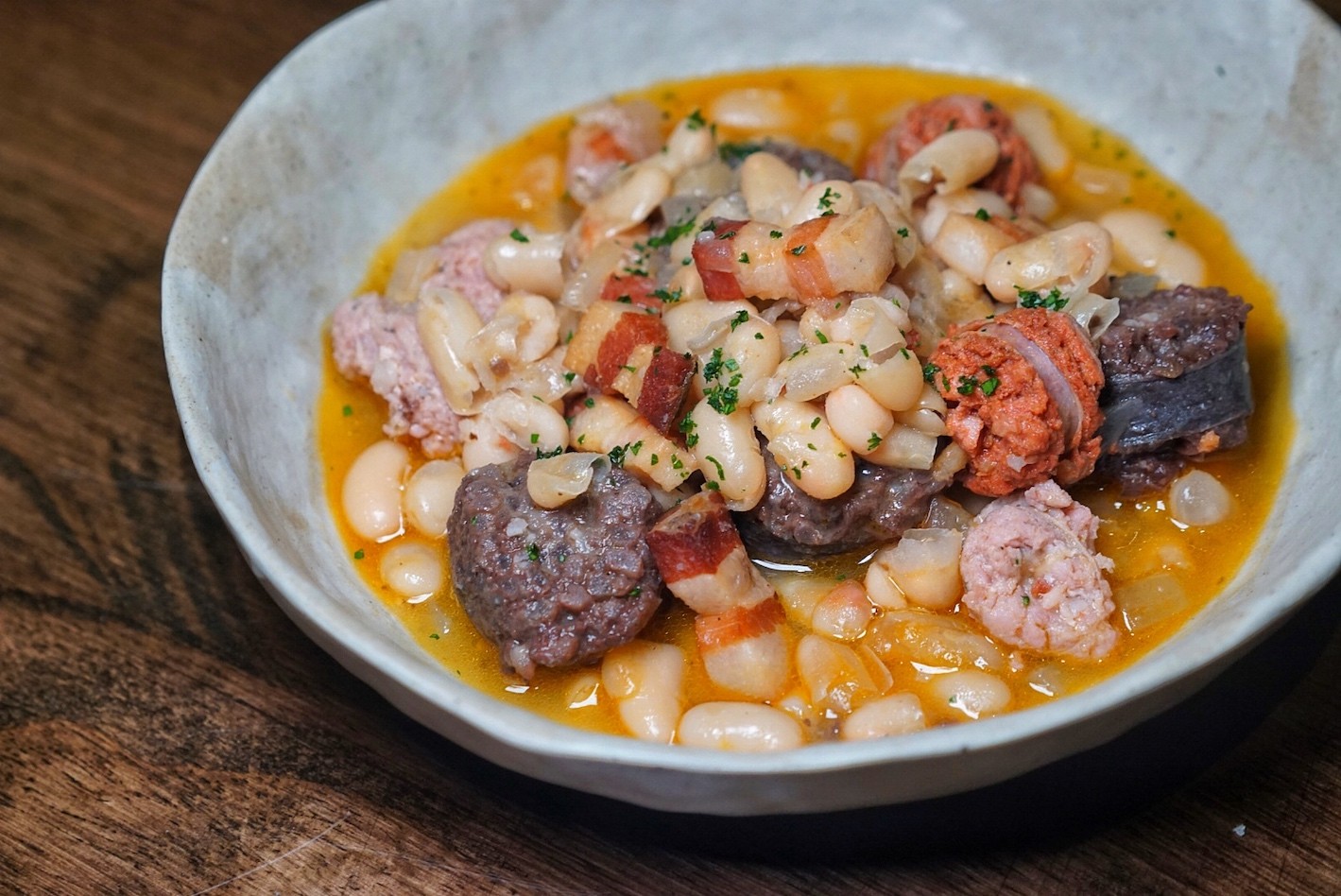
Image by Sophie Steiner/That's
Shanghai sees many a place that finds a good business model and just hits copy+paste over and over again. There’s nothing wrong with that. But Forage wants to be the opposite, and it’s not easy to go against tradition – reinventing the wheel to try to do something different and leave a mark.
Forage, 141 Maoming Nan Lu, by Nanchang Lu, 茂名南路141号, 近南昌路.
INT.
Neo bistro and wine bar INT. soft opened this past April behind Mikkeller in Jing'an.
As the high-end version of the Interval series (INT. is short for Interval) – owned by Hong Kong's Twins Kitchen group (孖人厨房) – INT. is the first of its kind, bringing to Shanghai Chinese flavors and Cantonese cooking techniques, coupled with Italian undertones (plus natural wines).
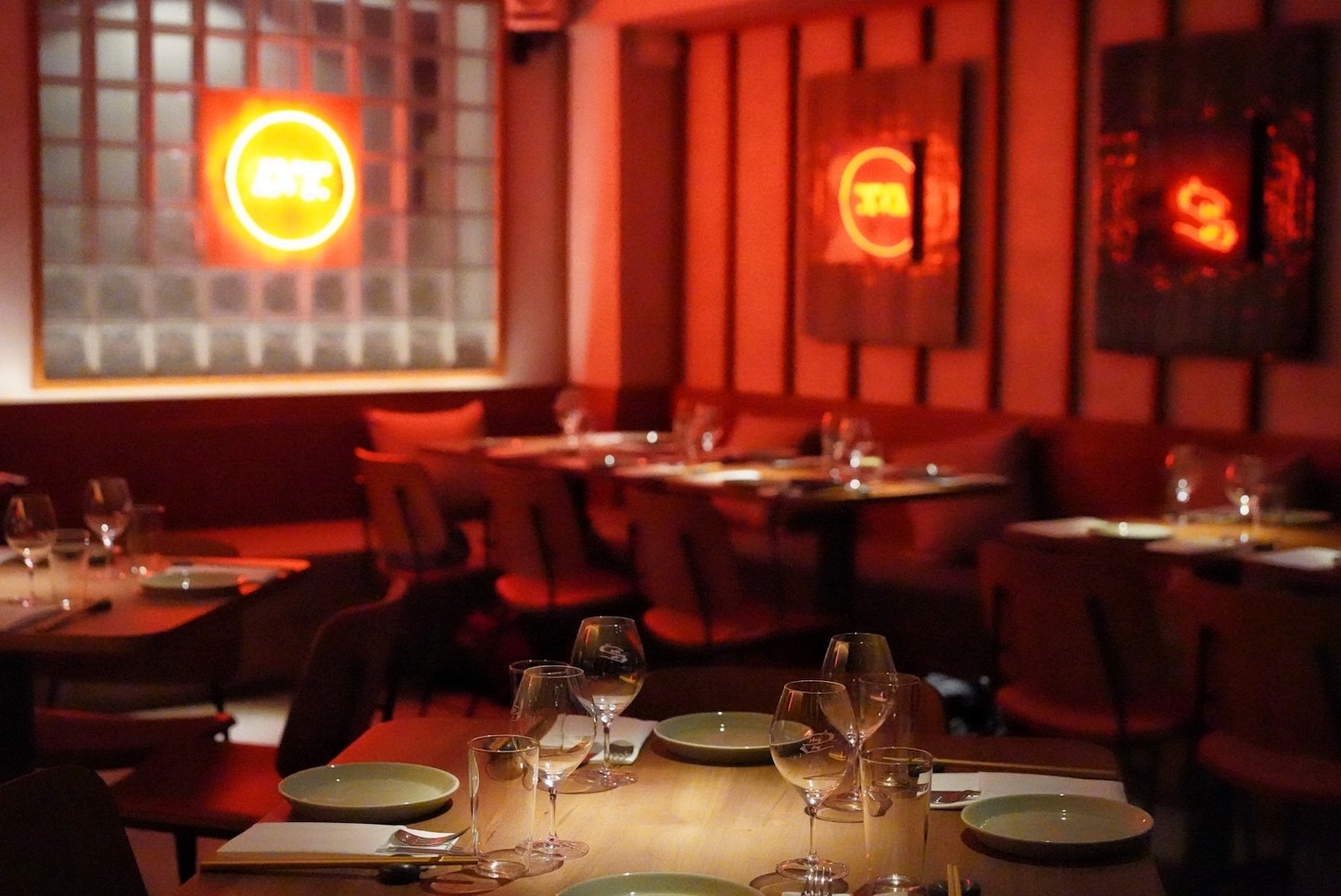
Image by Sophie Steiner/That's
The 23-item menu sees a myriad of cooking techniques that span East to West – from Western-style sous-vide, charcoal grilling, pickling and customary Cantonese broth-making – to pay tribute to the almost fully locally-sourced roster of ingredients.
Their first venture outside of Hong Kong sees masterminds Joshua Ng and Chef Sean Bai draw on experiences from a four-hands collaboration between Ng and Chef Danny Yip of Hong Kong’s The Chairman’s (#23 on World’s 50 Best Restaurants 2022, #5 on Asia’s 50 Best Restaurants 2022).
The two worked for weeks, combining Italian and Cantonese flavors to build Asian-infused dishes, and the collaboration event served as a jumping off point for the entire menu that can be found now at INT. right here in Jing’an.
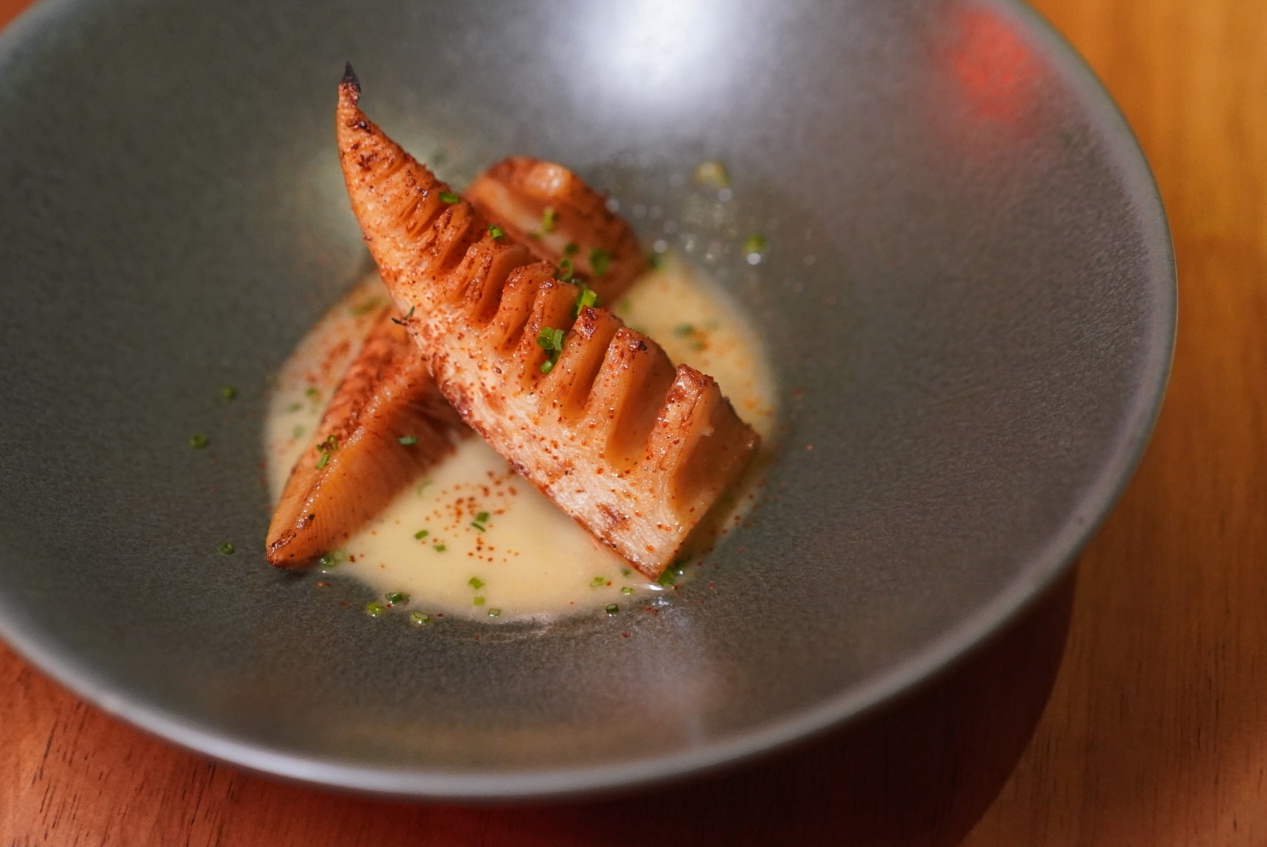
Image by Sophie Steiner/That's
While the venue is branded as having “Italian DNA” that aligns with the rest of the Interval restaurants in Hong Kong, we didn’t totally feel that part; it’s more novel Chinese fusion, heavier on the Chinese than the fusion. Less of a menu issue, more of a branding issue.
INT., Room 114, Bldg. 9, No. 60, Lane 273 Jiaozhou Lu, by Wuding Lu, 胶州路273弄60号114室, 近武定路.
Ling Long
Ling Long, aligning with the Waldorf Astoria Shanghai on the Bund's ethos and timeless style, fits just 30 people (across eight tables and two private rooms) with one seating per day, presenting diners with an ever-changing, whimsical set menu focused around the concept of umami – or xian in Chinese – with lauded Chef Jason Liu himself the mastermind behind each and every dish.

Image by Sophie Steiner/That's
Chef Jason brings his Beijing experience (opening Ling Long Beijing, No. 77 restaurant on Asia’s 50 Best list) and combines it with uncommon, homegrown ingredients, Middle Kingdom tastes and a thoughtful twist.
The aim is to re-create this cross-China journey in a new “Shanghai way” over eight courses for RMB1,680+, with optional wine and drink pairings for an additional RMB980+.
Our first impression of Ling Long: how completely divergent it is compared with other current Chinese fine dining establishments.
Yes, there are white tablecloths, avant-garde Chinese art-decorated walls in crimson and onyx hues, and gloved service coupled with both verbal and cardstock introductions for each course.
But the meal follows a playful path that leads diners further down the (white) rabbit hole.

Image by Sophie Steiner/That's
It is one that weaves through pairings, like flash-fried Taizhou rockfish in a lip-tingling mala Sichuan broth with spontaneously-fermented Cantillon gueuze – a union that is separate from a late-night Chengdu curbside street snack, but somehow very much a part of it.
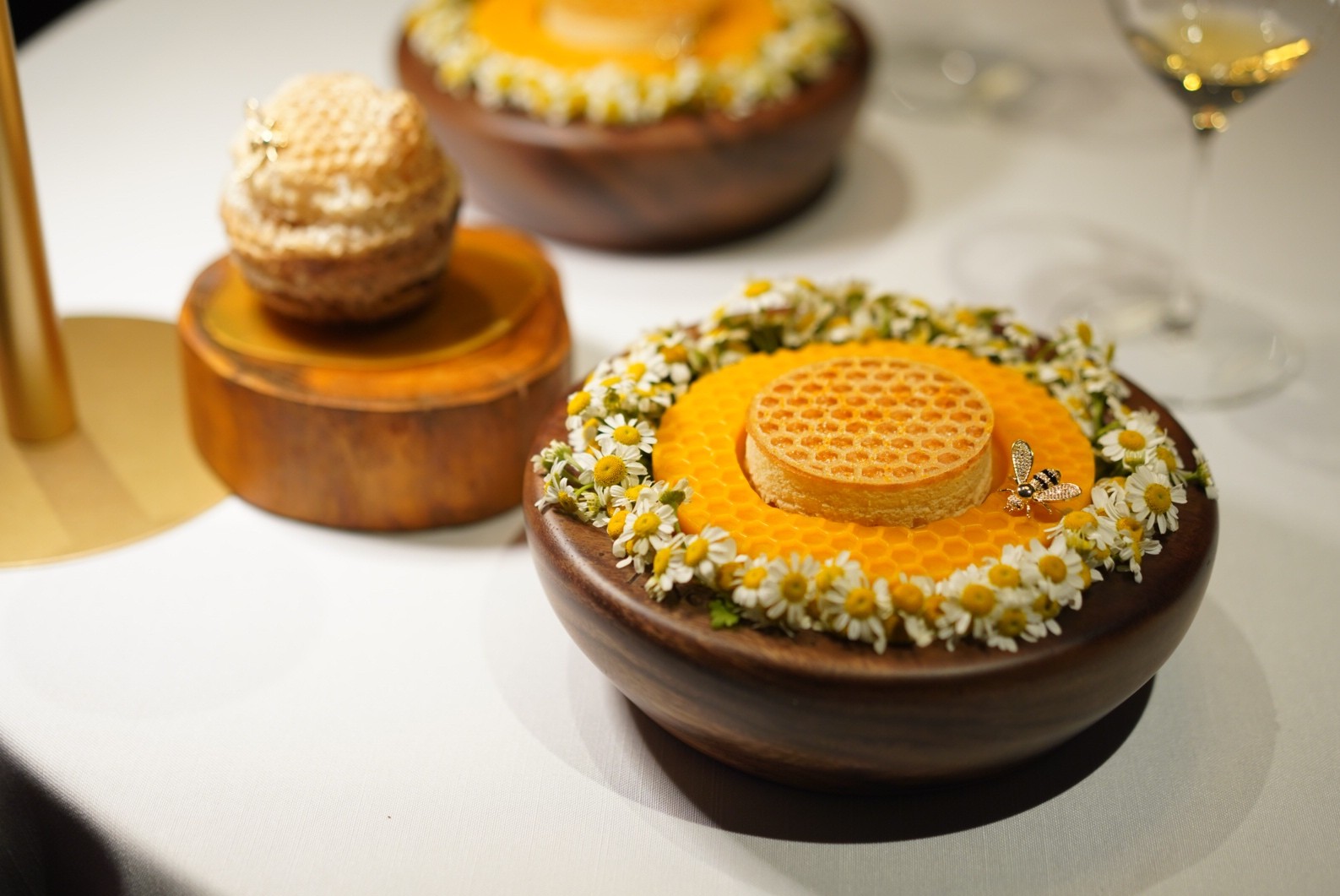
Image by Sophie Steiner/That's
By the end of the meal, you’re not even phased by the theatrics – the level of tongue-in-cheek eccentrics having built, each course goofier than the last.
So no – it’s not the “stuffy” hotel restaurant Chinese fine dining experience you’re expecting.
Ling Long, 2 Zhongshan Dong Yi Lu, by Guangdong Lu, 中山东一路2号外滩华尔道夫酒店,近广东路.
Madame Ching x Anarkia at Joye&Sam
Located in Joye&Sam lifestyle hub (in the Hengshan 8 Complex), Chef Gabo's Anarkia Craft Kitchen is a brand cooperation with Madame Ching.
A fresh Chinese concept, it is backed by self-trained chef Derek Wang – an Australian born to Hong Kong parents – who is serving up quirky spins on the Cantonese street food flavors of his childhood, paired with natural and Chinese wines, soju and a highballs.

Image by Sophie Steiner/That's
Easily the best green vegetable we’ve consumed all year, the roasted Broccolini (RMB58) exemplifies the Madam Ching cooking experience.
Chef Derek first blanches the greens in his own lushui recipe, a Cantonese braising liquid used commonly for marinating meats in Guangdong style cooking (it’s a master stock of sorts, combining a slew of aromatics, garlic, ginger, soy sauce, vinegar – and so on – giving the beloved Cantonese roasted meats their signature essence).
The broccolini are served over a velvety seaweed powder-speckled labneh, dribbled with XO oil and an herb oil made from sage and coriander. Crunchy, fried shallots bring the entire bite together.
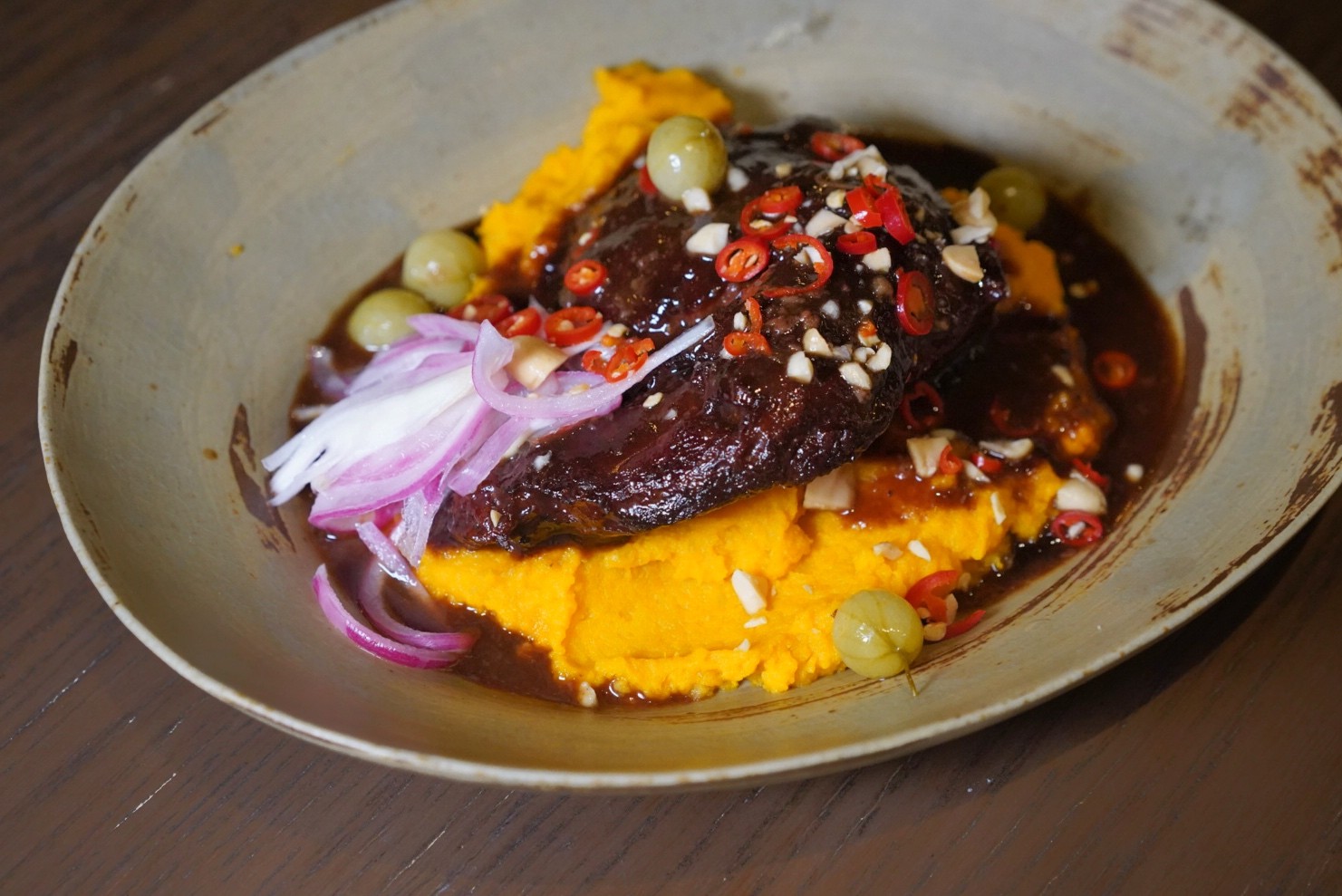 Hongshao Beef Shank (RMB138), Image by Sophie Steiner/That's
Hongshao Beef Shank (RMB138), Image by Sophie Steiner/That's
Other "new-age" Chinese dishes span a play on Cantonese beef brisket curry with Comte cheese stuffed brisket cigarillos – resting atop a thick, sludge-like stew made of Japanese curry mix, shachajiang from Fujian and coconut milk; and hongshaorou beef shank with pickled gooseberries.
Joye&Sam, 8 Hengshan Lu, by Wulumuqi Lu 衡山路8号锦和越界, 近乌鲁木齐路.
Maolago
It’s a bold move to name a restaurant after a vine tomato. But when a restaurant’s signature dish is all about showcasing said Guizhou-grown vine tomato that forms the base of the province's most famously addicting fermented sour, spicy fish soup, then we get it.
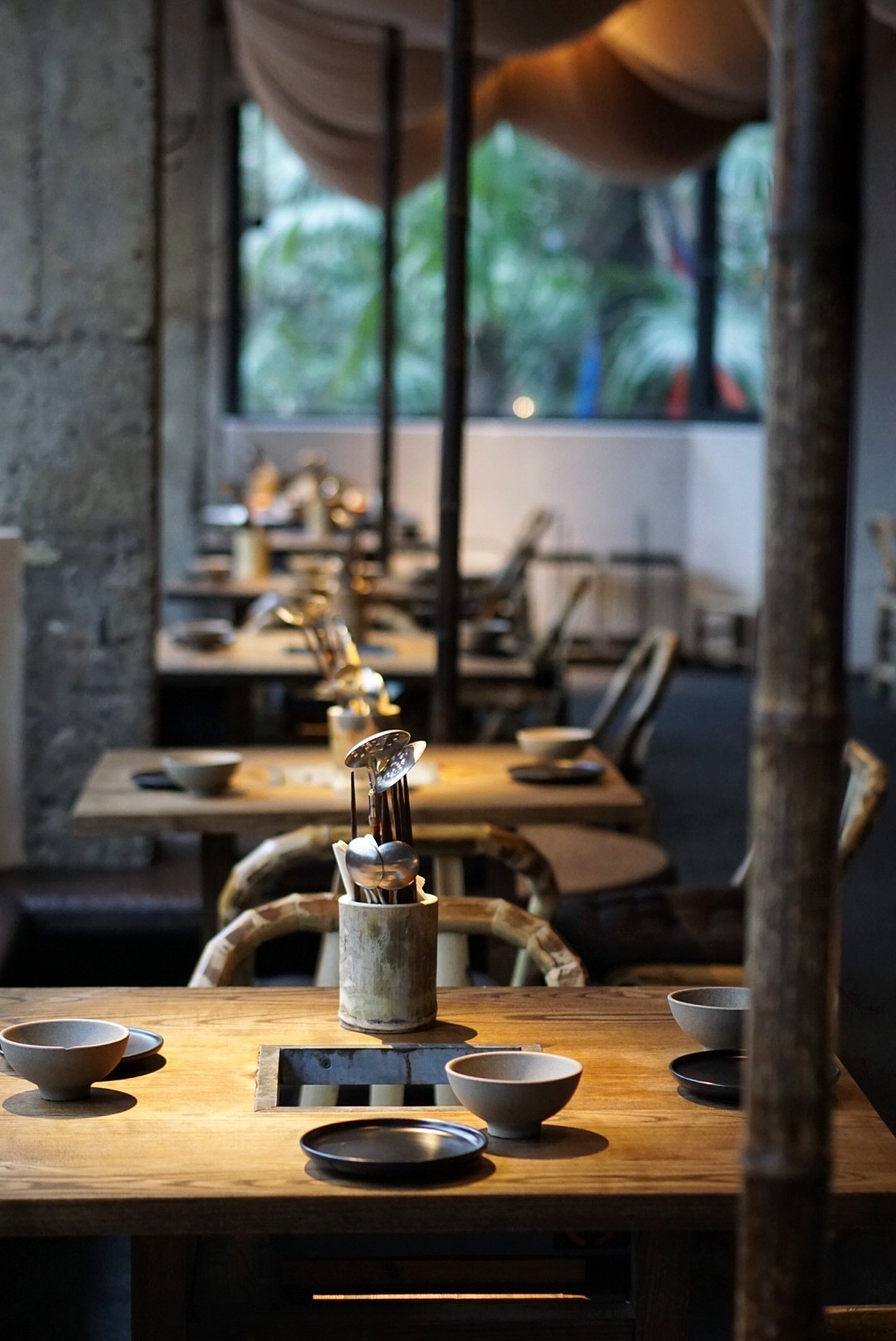
Image by Sophie Steiner/That's
Maolago, (a part of the Oha Group) is a sanctuary to all things Guizhou comfort food, with an emphasis on Miao cooking heritage.
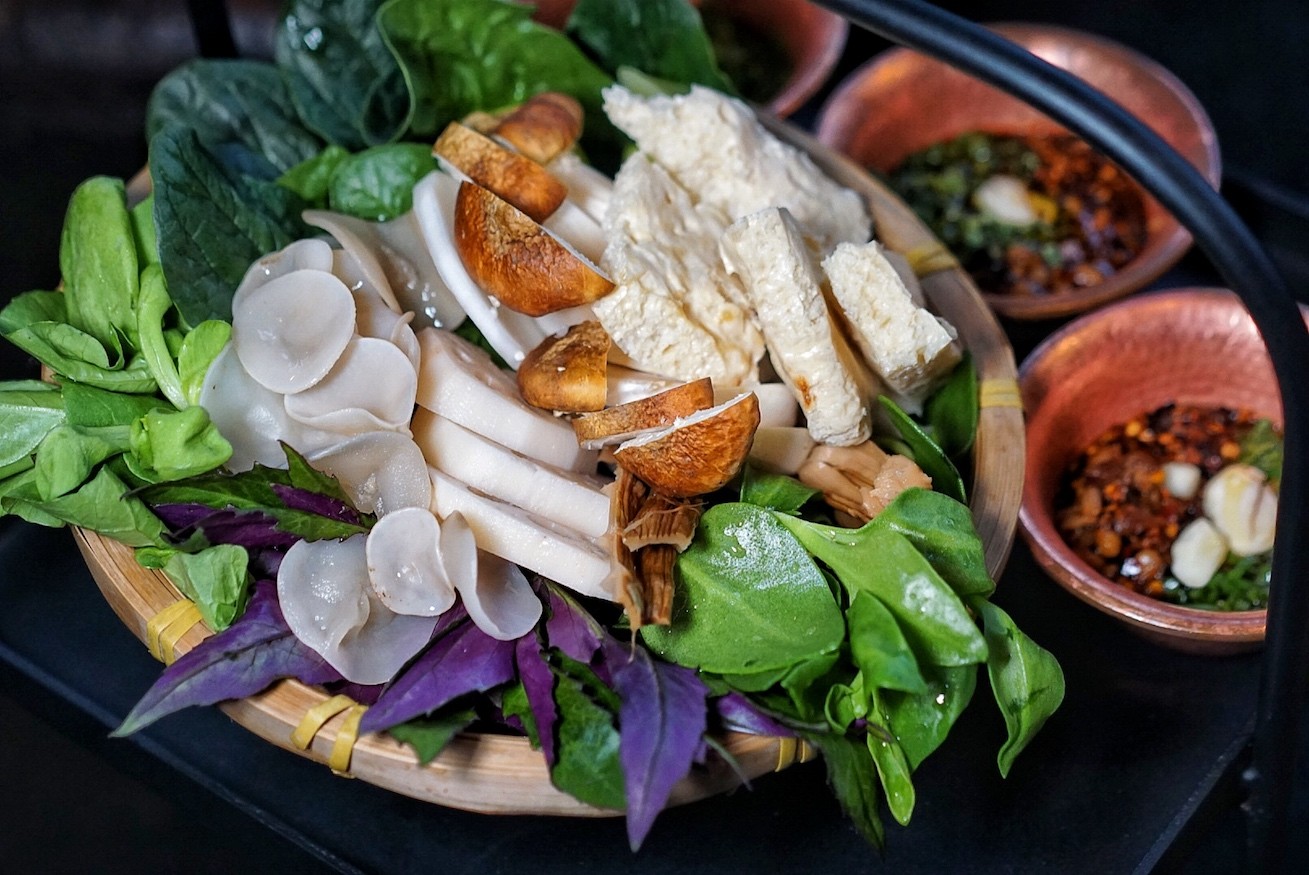
Image by Sophie Steiner/That's
Chef Zou Mingyang, who worked with and learned from Blake Thornley at Oha Eatery, is behind the menu’s inventive design.
Where Oha Eatery can sometimes go off the deep end – think smoked ham covered in moss and fried tree bark – Maolago is more refined, with a strong focus on respecting regional ingredients.
Whimsy is definitely still a key defining factor, especially in the small plates, but there is a streak of restraint that makes each dish enjoyable to a broader audience, not just those with a deep understanding of Guizhou’s vegetation ecosystem.
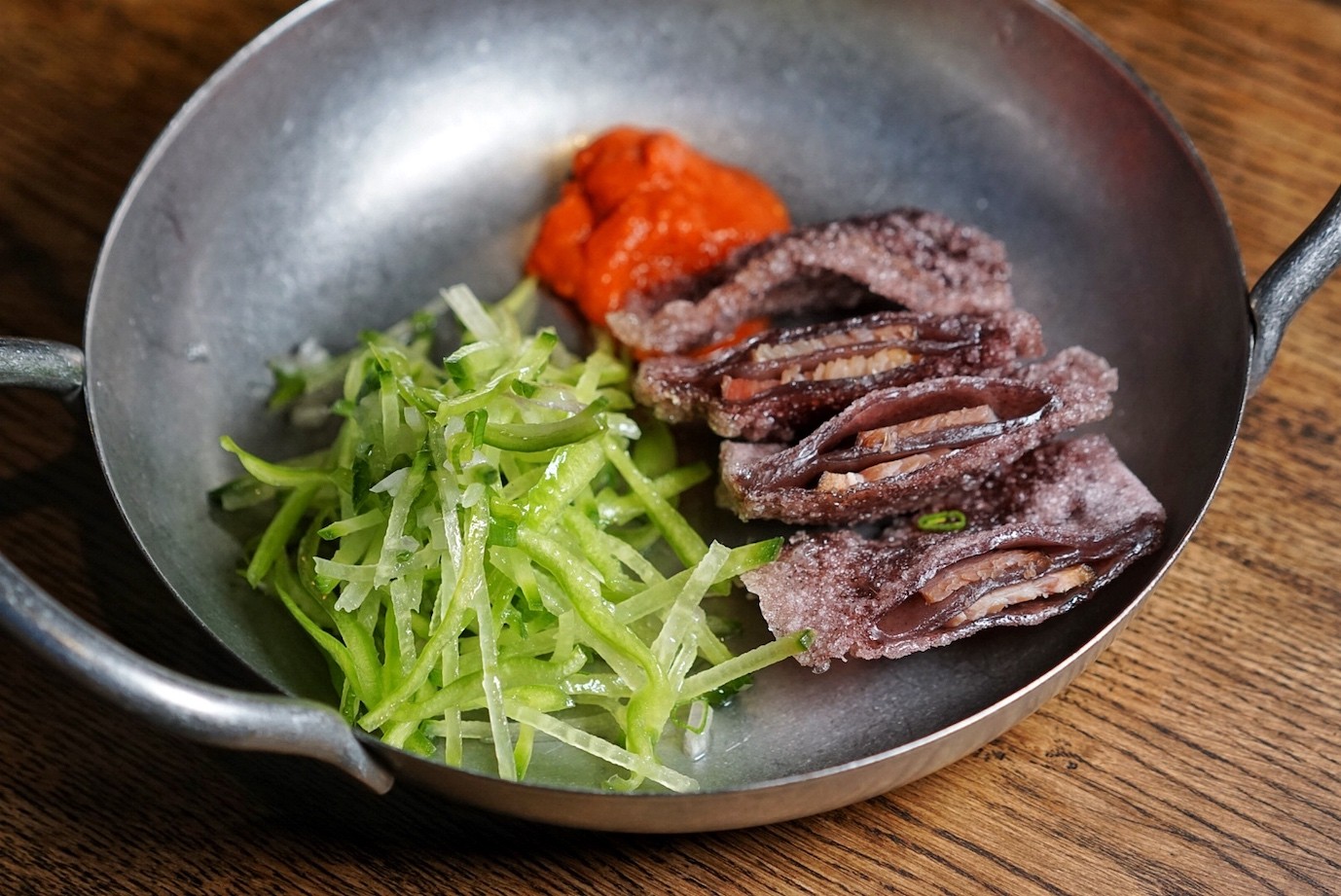
Image by Sophie Steiner/That's
The food, drinks and overall vibe are more accessible than other ‘fine dining’ Chinese spots, with compelling, superior quality food offered at a significantly better value.
The understated, elegant presentation is approachable to anyone who falls on the spectrum spanning an interest in Chinese cuisine. Plainly stated, this is food to be excited about.
Maolago, 100-2 Fuxing Lu, by Wukang Lu, 复兴路100-2号, 近武康路.
Obscura
Chinese fine dining restaurant Obscura embodies the contrasts that exist within Shanghai; it may be high-end, yet it is influenced by the everyday: classic provincial dishes showcasing Chinese flavors.
Run by chef couple DeAille Tam and Simon Wong, Obscura opened with a bang in the end of 2020, and earned its first Michelin star in under a year.

Image by Sophie Steiner/That's
The menu – which isn't revealed until the end, making every dish a surprise – takes you on a journey across the flavors of China's vast land mass; a personal account of Tam and Wong's travels, what's interesting to them, what intrigues them.
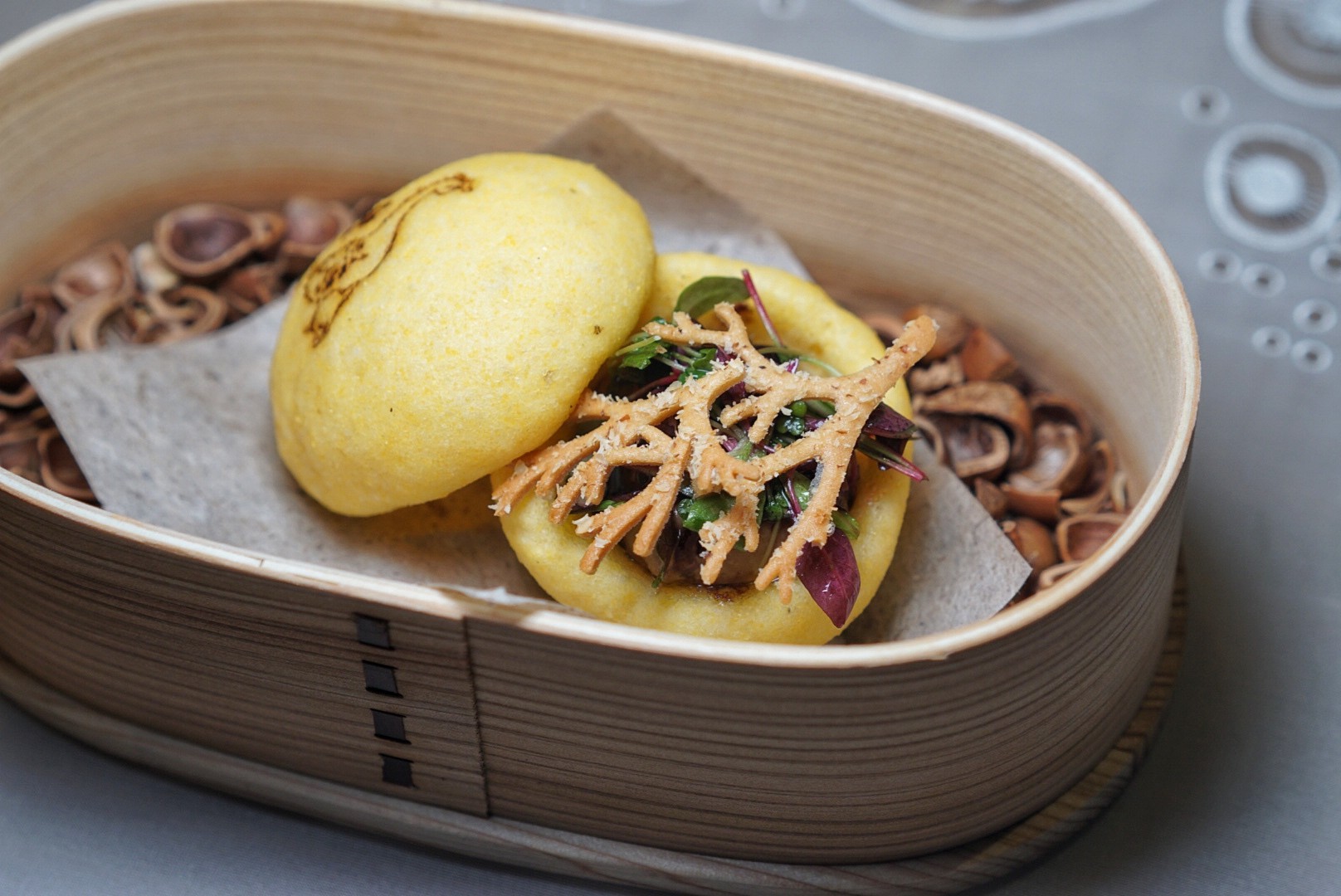
Image by Sophie Steiner/That's
The Canadian-Chinese chefs aren't constrained to the eight traditional cuisines of China, but instead draw on whatever they've encountered that piques their interest most.
Working in front of you, the chefs lean over to introduce dishes and give a bit of backstory for each bite.
Obscura, 538-2 Xikang Lu, by Kangding Lu, 西康路538-2号, 近康定路.
Oha Eatery
Chef Blake Thornley, who recently left Shanghai to open a restaurant in Bali, was the mastermind behind the novel menu at Oha Eatery, and a true mad scientist at heart.
Imaginative, gritty and forward in the best way possible, Thornley combined his previous experience conducting lab work with his love for food to construct inventive dishes that you won’t see on any other menu in town.
And his legacy carries on in the dishes still served at Oha.
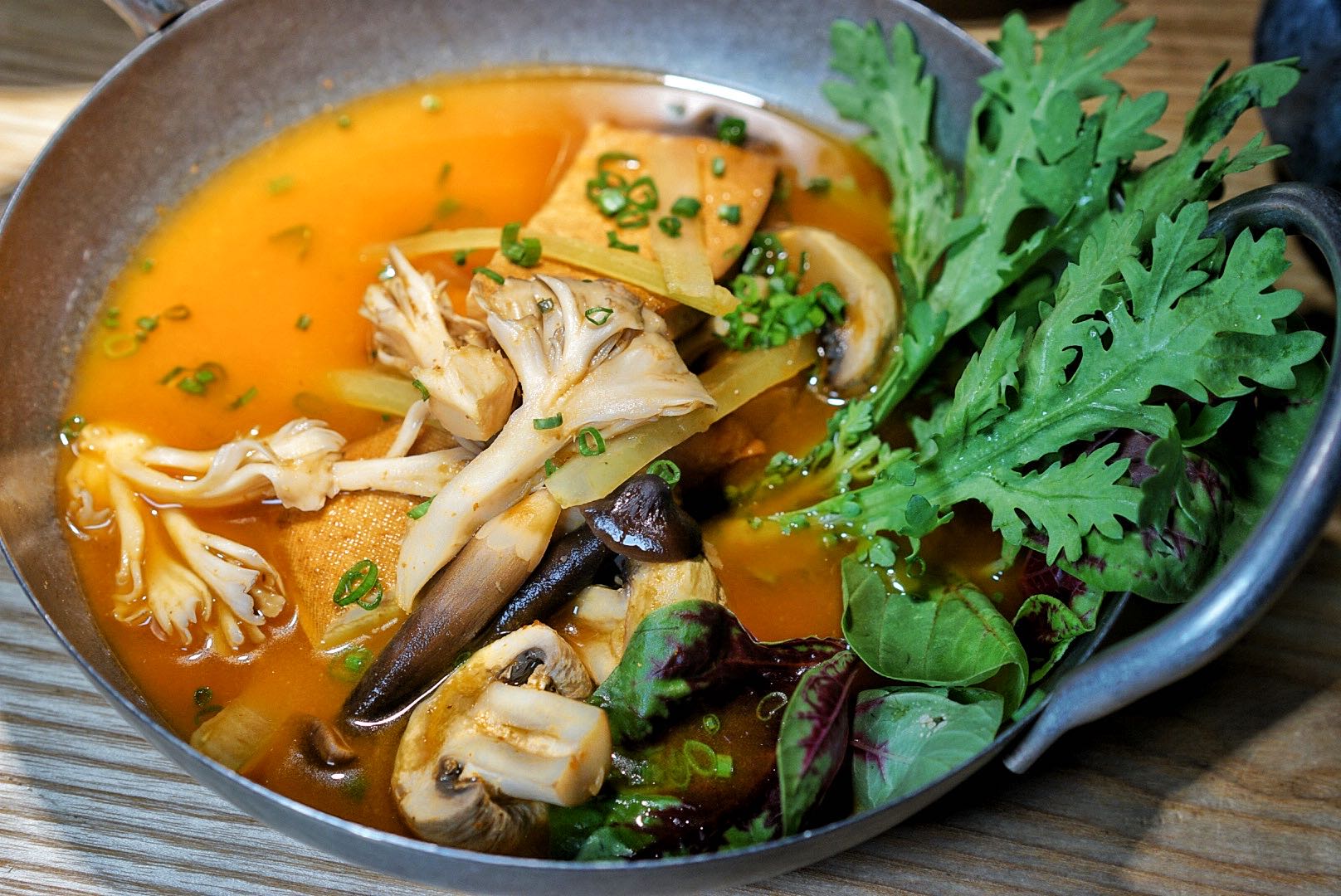
Image by Sophie Steiner/That's
The menu falls in the category of Guizhou cuisine, mixing mountain-inspired flavors with the latest cooking techniques to introduce dishes that confuse yet intrigue the senses.
Clever reimaginings of geographically-specific specialties is what you can expect, with hearty flavors, inventive uses of Guizhou produce and unorthodox presentation.
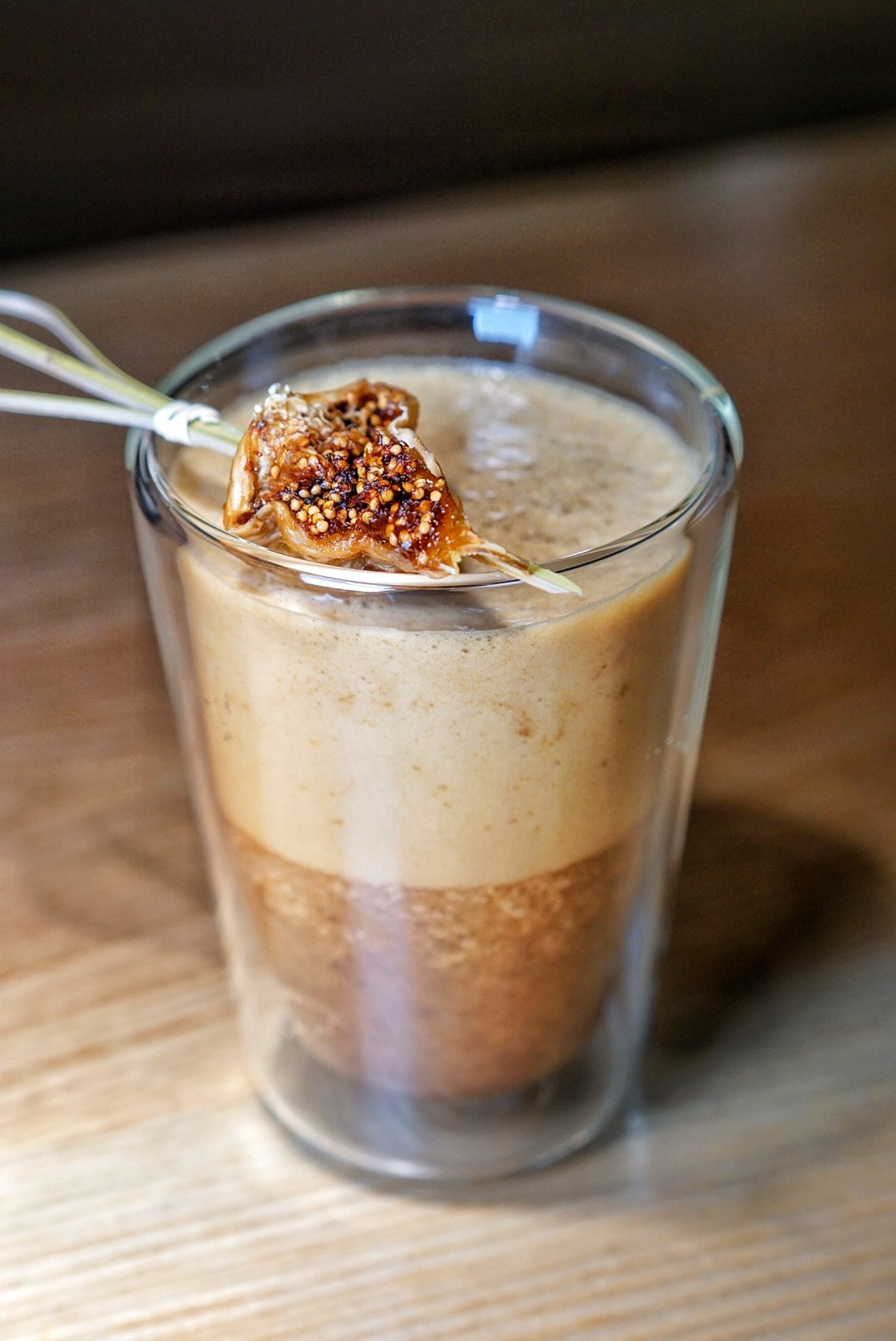
Image by Sophie Steiner/That's
We’re fans of Oha and have been for years, but there’s no denying it’s a Marmite restaurant: you’ll either love it or find it far too complicated and confusing.
If you’re content with big portions and simpler ingredients, give Oha a miss; if you're keen on seeing how a mix of wild experimentation and Chinese flavors fit together, schedule a visit.
Oha Eatery, 23 Anfu Lu, by Changshu Lu, 安福路23号, 近常熟路.
Paal
With nearly 30 years of combined bar experience between the two, Paal co-owners Crawford Su and Aya Guan are no strangers to China’s bar scene; the duo met in Guangdong, where they both grew up and started their drinks industry careers.
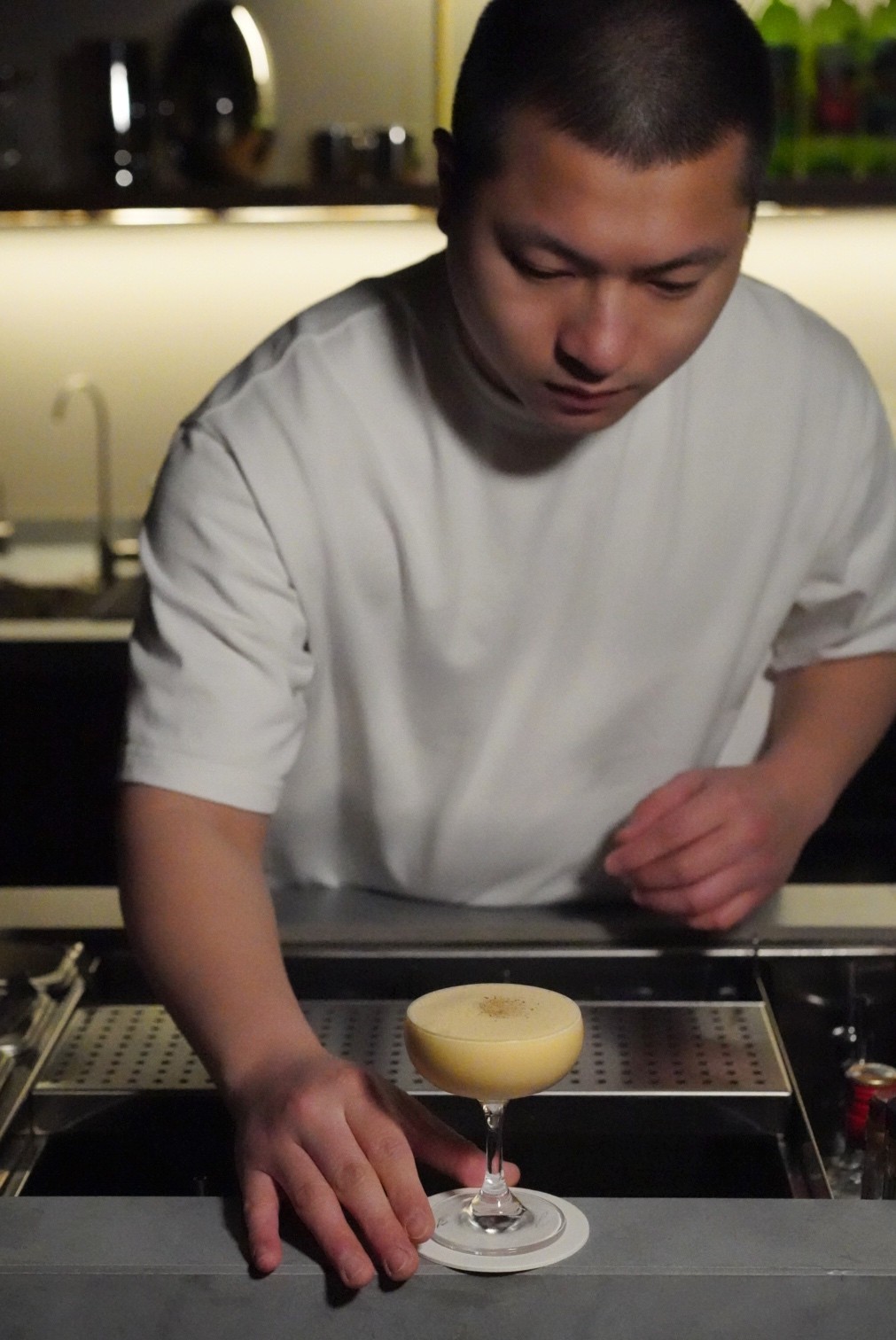
Image by Sophie Steiner/That's
Thus it's no surprise that Cantonese flavors weave their way through the menu’s nine cocktails, drawing on the two owners’ favorite dishes and Guangdong-specific ingredients from their hometown of Jiangmen.
Sweet and sour pork, salted egg yolk zongzi, and aged tangerine peel are currently making an appearance in crystalline clear and clarified, sippable cocktail form, with drinks set to rotate every few months.

Image by Sophie Steiner/That's
Like the décor design and menu layout, 99% of what you perceive in the glass in real time has been carefully curated on an Advanced Chemistry level, employing tools like a sous vide machine, hot plates, clarification gear and a rotovap – kit that plays with the senses so your eyes see one thing but your tongue tastes something completely different.
Paal, 94 Nanchang Lu, by Nanbei Gaojia Lu, 南昌路94号, 近南北高架路.
Wulu
A futuristic take on time-honored tea house culture, Wulu on Fenyang Lu provides a refreshing alternative to always grabbing a coffee or cocktail.
Partners Ting Huang and Dinguo Zheng (Vege Wonder 山河万朵, a one Michelin-star restaurant in Beijing) offer guests everything from sparkling teas to nitrogen teas to cold-drip teas, along with contempo Chinese fare for sharing that highlight indigenous ingredients in a bright, outdoor-like urban garden atmosphere.

Image by Sophie Steiner/That's
"I grew up in Shanghai and was heavily influenced by how international it is," says Ting. "In Shanghai we have access to cuisines from all over the world. People here appreciate classical Chinese cuisine but also accept food from around the globe.
"So, after working for over a year in New York, I decided it was time to come back to my roots and open my own place."
At Wulu they focus mainly on pan-Chinese, using as many Shanghai-sourced ingredients as possible. The team draws inspiration from the food of each place they visit, specifically focusing on street snacks – as they reflect the food habits and essence of an area.
 Image by Sophie Steiner/That's
Image by Sophie Steiner/That's
"While in America chefs focus most on developing new dishes, those in China tend to follow protocol more and strive for excellence," remarks Ting, sipping a sparkling cold brew tea.
"Personally, I like to combine both of these concepts to fit my own cooking style, and I share that at Wulu."
Wulu, 77-3 Fenyang Lu, by Fuxing Zhong Lu, 汾阳路77-3号,近复兴中路.
Yuan You Tao
Yuan You Tao (园有桃), or Where The Peaches Grow, as it's so poetically called in English – opened quietly on Xinle Lu last September.
It is the lovechild of five partners: Chef Holly Lian (Crave Café) and Ruomi Gan (Mimilato) on menu R&D and design; Lin Zhenyi (Mimilato) on branding; Xie Shu Yu on front-of-house management; and sommelier Yannick De Brouwer (previously of RAC, Crave Café) on, well obviously, wine.
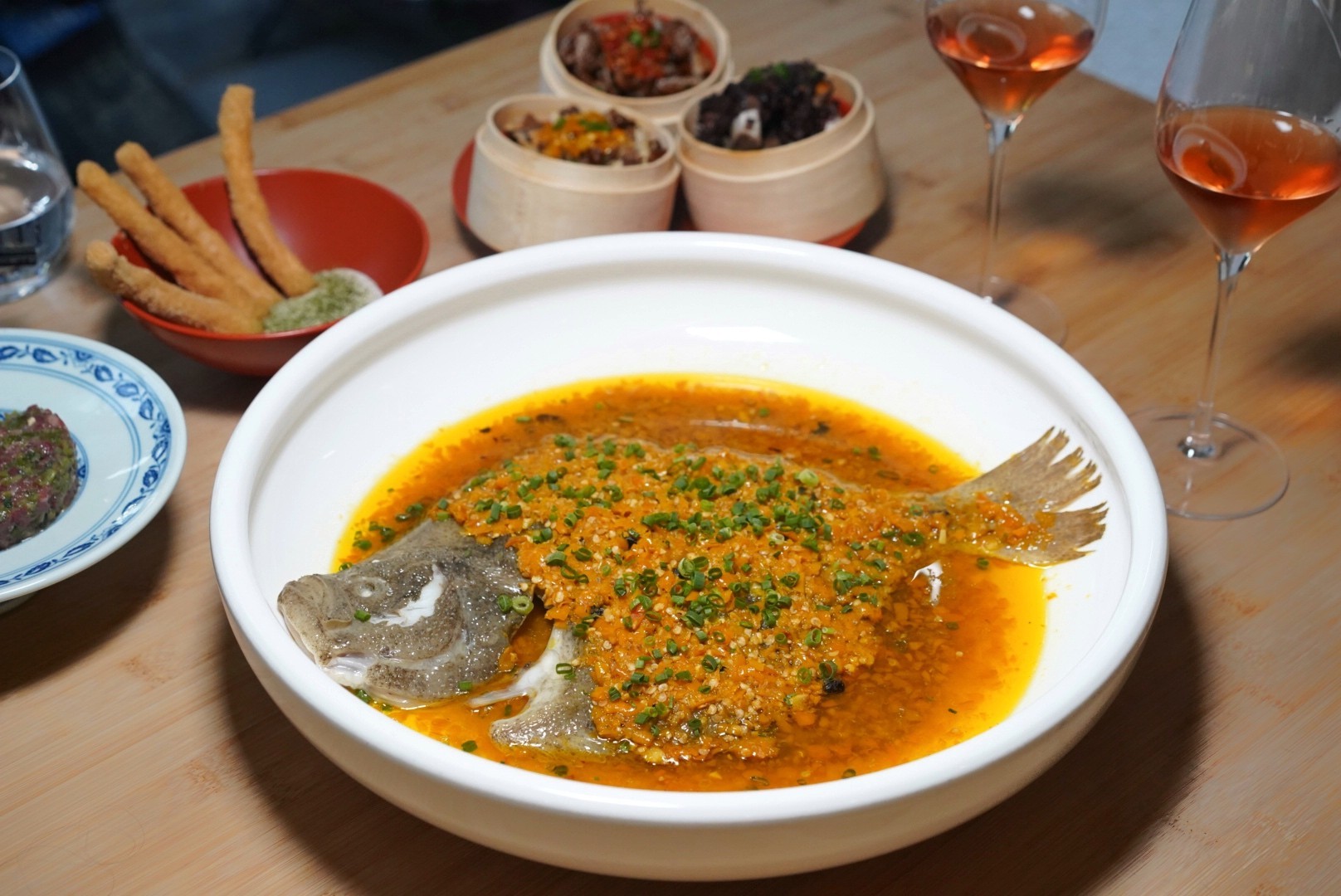
Image by Sophie Steiner/That's
Half the team is Hunanese, while the other half attended culinary school in Paris; they decided to bridge the gap by embracing the flavors of their childhood, presenting them in a way that fits the modern lifestyle-centric Shanghai dining scene through hints of Western influence – via ingredients and cooking techniques.
The Hunan countryside offers abundant diversity – of ingredients, cooking techniques and flavor profiles. The aim of Yuan You Tao is to dig deeper into that local tradition, honoring the dietary customs of Xiang cuisine.
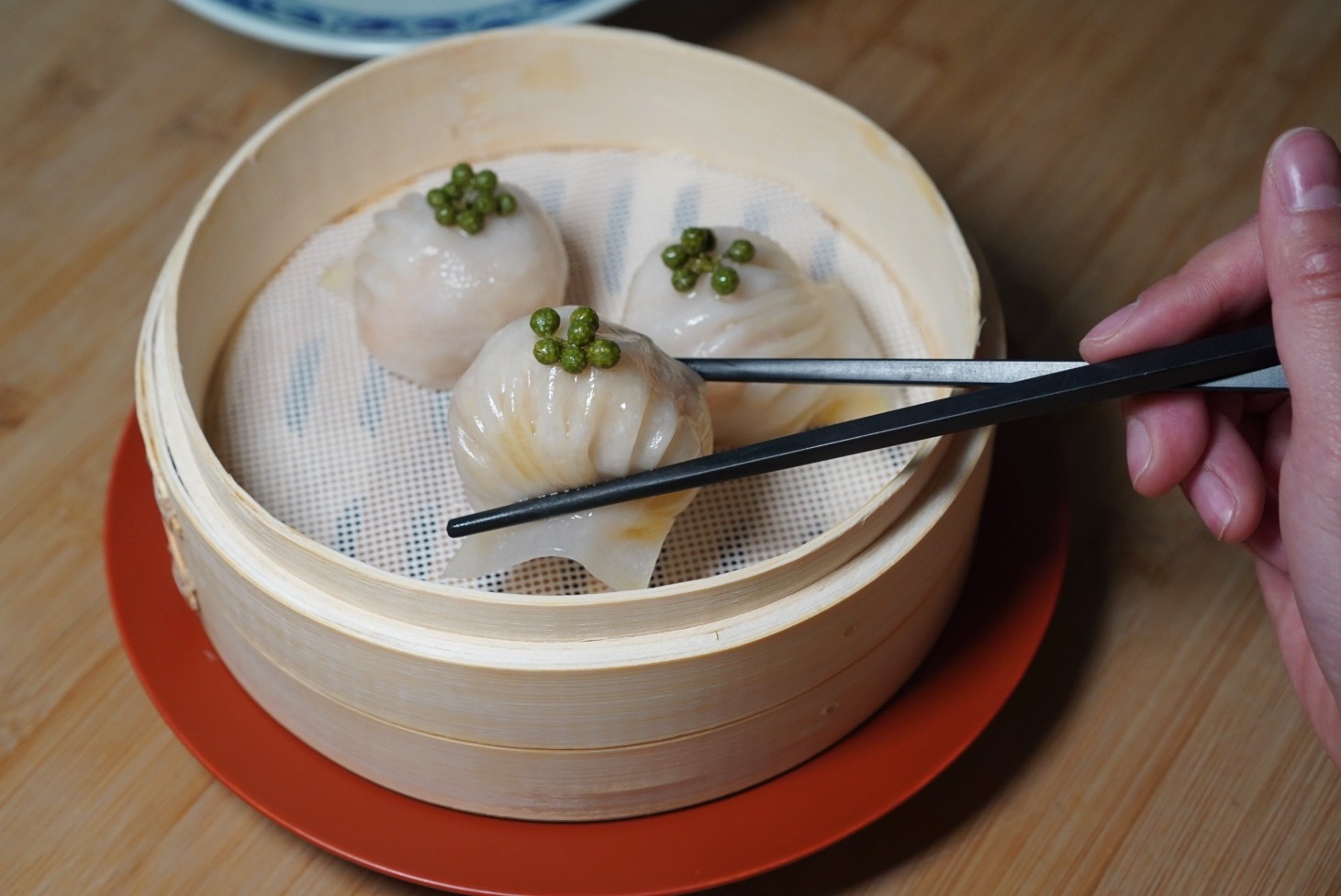
Image by Sophie Steiner/That's
“Hunan food is a ‘countryside’ cuisine – one earmarked for its fiery, fresh heat. The spice helps workers eat more rice to fuel them for the day,” explains Ruomi, while slurping a handmade rice noodle from a chili oil fish head broth.
“We want to showcase the local xiangla (香辣) – savory spice – taste, yet in a healthier, practical form by balancing bites with pops of acid or smoked and preserved elements that are common in the mountainous areas of the province.”
Yuan You Tao (园有桃), 167 Xinle Lu, by Donghu Lu, 新乐路167号, 近东湖路.
More to come...
This is just the tip of the iceberg, a few of our favorites in this promising space. But, a quick vetting of some 创意菜 – or creative cuisine – venues on Dianping reveals so much more. Stay tuned as we continue to dive deeper into this ever-growing, innovative category.
[Cover image by Sophie Steiner/That's]




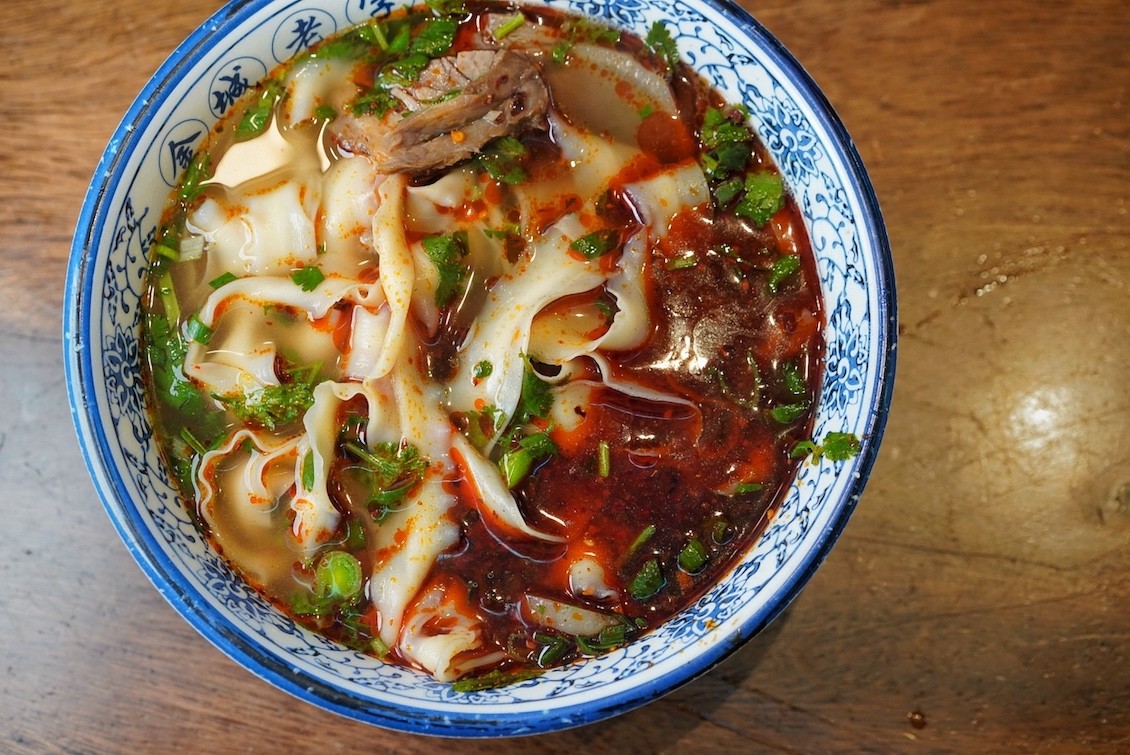
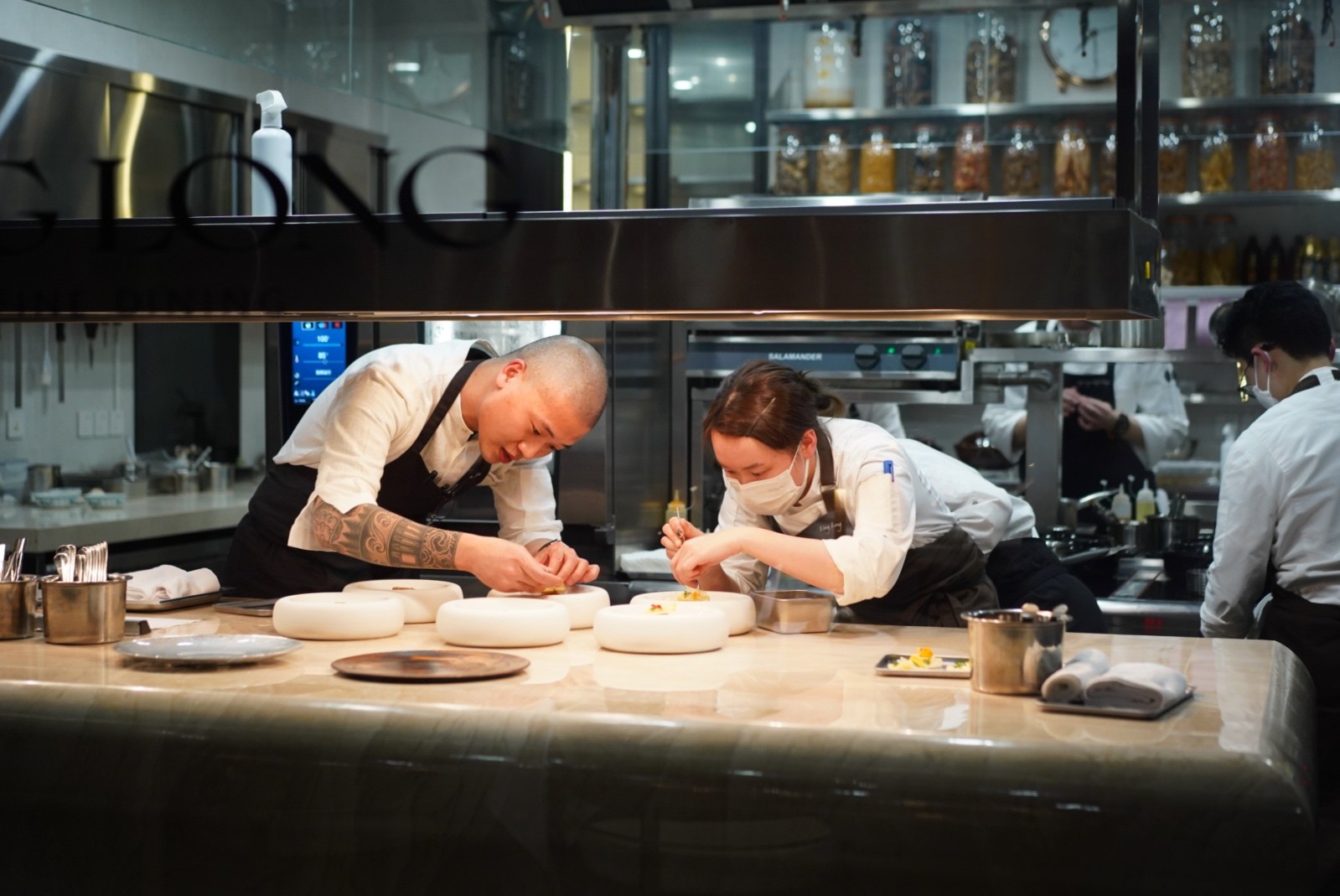
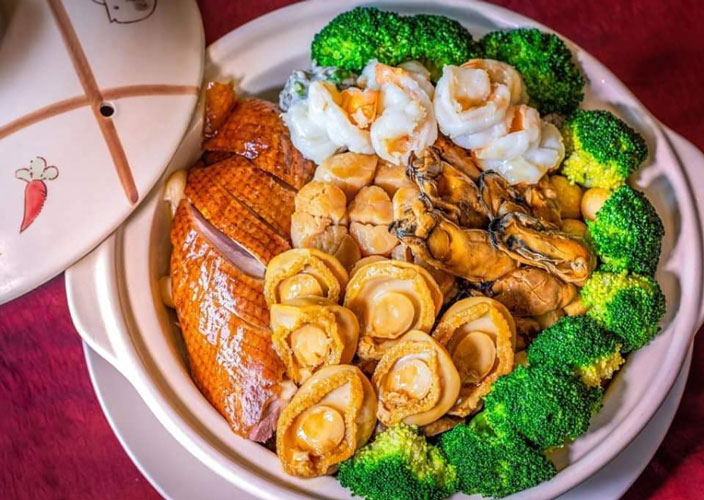














0 User Comments